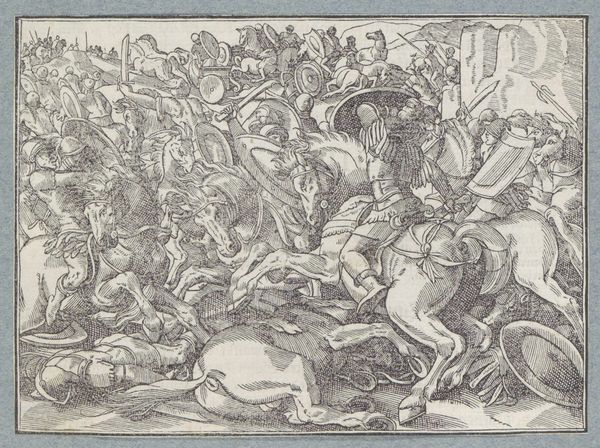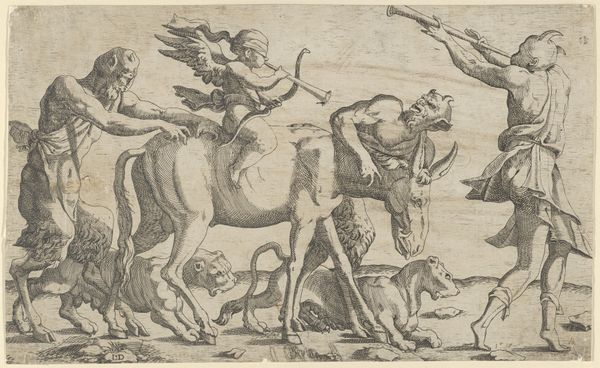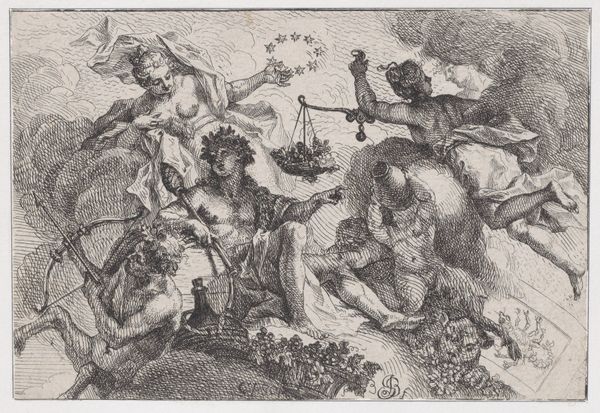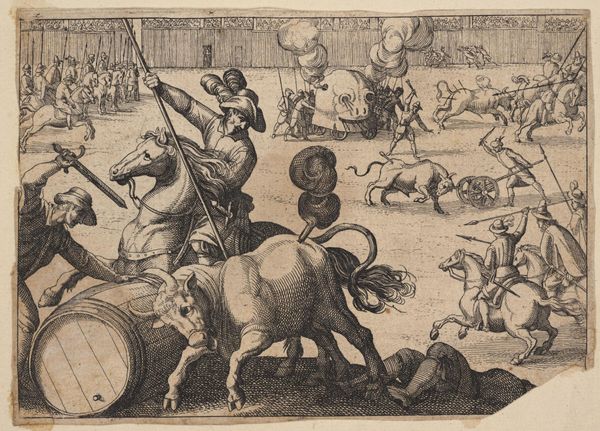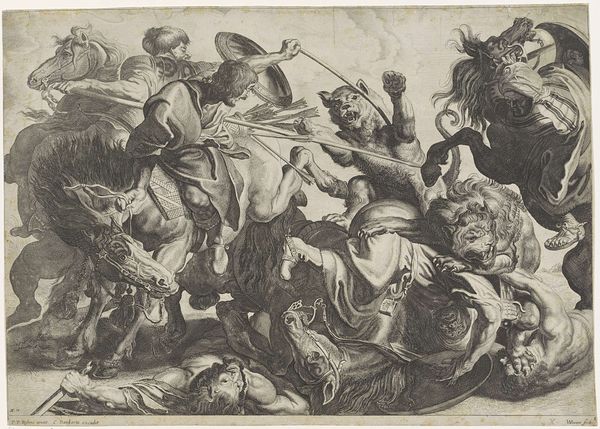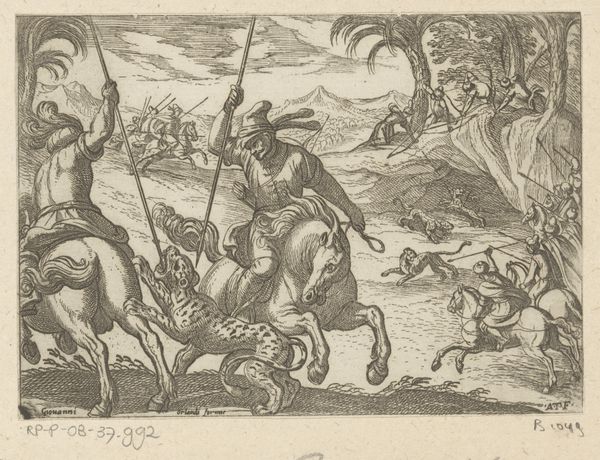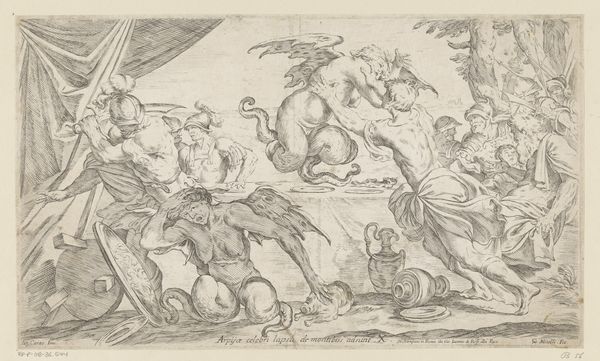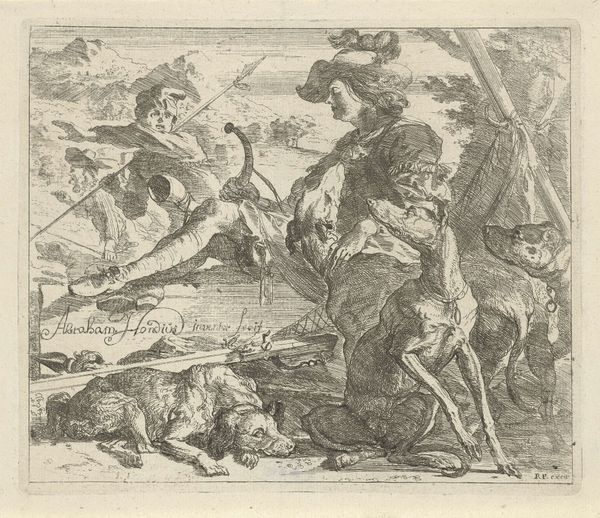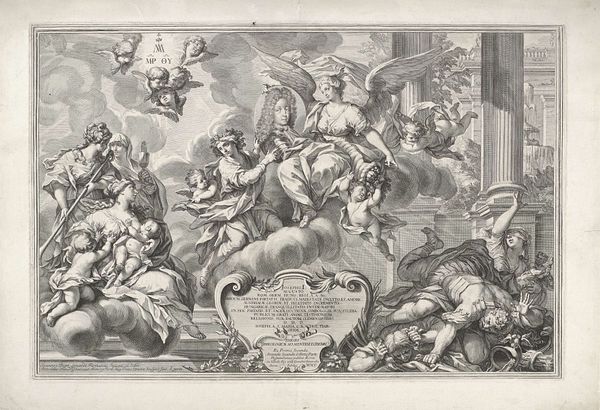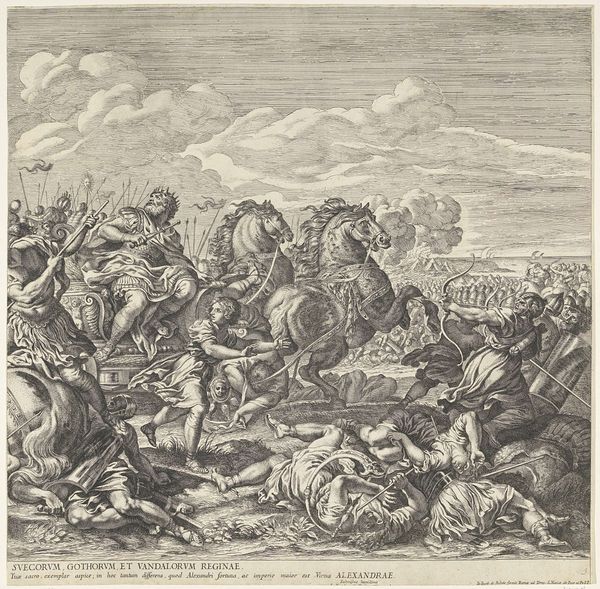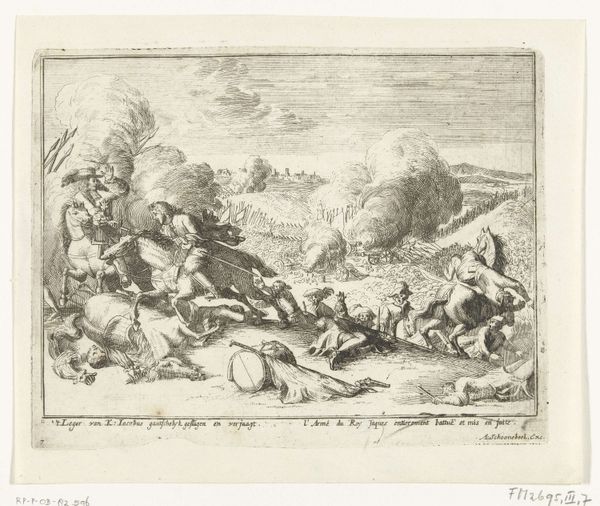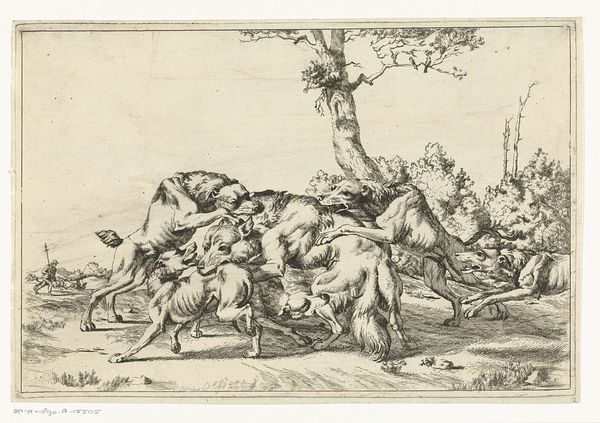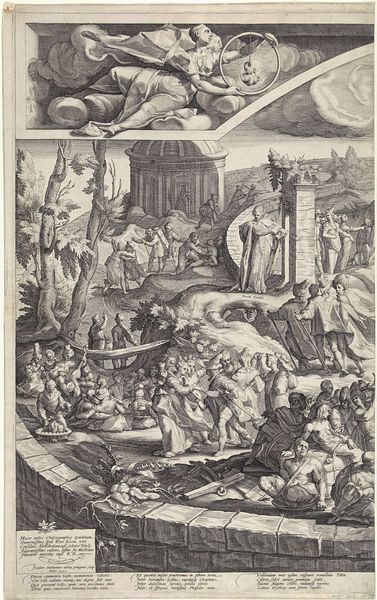
Hollands antwoord op Holland in de Franse drukpers, 1672-1673 1673 - 1674
0:00
0:00
drawing, ink, engraving
#
drawing
#
ink drawing
#
allegory
#
baroque
#
figuration
#
ink
#
line
#
history-painting
#
engraving
Dimensions: height 181 mm, width 182 mm
Copyright: Rijks Museum: Open Domain
Curator: Here we have Romeyn de Hooghe's etching, "Hollands Antwoord op Holland in de Franse Drukpers, 1672-1673," now held here at the Rijksmuseum. De Hooghe was a master of allegorical printmaking, and this piece is no exception. Editor: It's densely packed, isn't it? Chaotic, even. My first impression is one of political satire, rendered with impressive technical skill in the detailed lines and shading. The medium really suits the message here. Curator: Absolutely. The etching process, the very means of production, allows for the wide dissemination of this highly charged message. De Hooghe directly responds to Louis XIV's propaganda during the Franco-Dutch War. This piece becomes a visual retort, a defiant Dutch answer crafted within their own burgeoning print culture. It critiques the Sun King's actions and those allied with him through carefully coded imagery. Editor: I notice how much emphasis is put on tools scattered around. Those printing implements strewn at the bottom - that suggests to me the subversion of one technology using itself, echoing in art the very nature of war using like with like, of nation on nation using what they each possess. Curator: Exactly. De Hooghe also critiques the French depiction of the Dutch Republic as weak and chaotic. See how the Dutch lion battles a French rooster. The whole engraving seems to be about reclaiming Dutch strength and virtue against the backdrop of immense pressure from Louis XIV's expanding empire, very much an intersectional play on colonial and power politics as related to that of empire and propaganda. Editor: The scale seems important, too. An etching is an easily reproducible, transportable object, a readily mobilized statement in a period of immense geopolitical instability. Did these allegories land? Curator: Contemporary viewers, well-versed in such symbolic language, would have likely understood and been deeply affected by this visual propaganda. It was a rallying cry, boosting national pride and unity in a time of great crisis. And its enduring presence here tells us a lot about the way the country continues to identify. Editor: I find it remarkable how De Hooghe harnesses both artistry and technology for political expression here. The intersection of materials, means of production, and historical circumstance, shows the powerful interplay between art and society. Curator: Yes, it truly showcases art's potency as both historical record and political intervention. The layered symbolism adds to that greatly. Editor: For me it shows us a remarkable example of how physical work, print processes and material conditions came together in a time of real national danger.
Comments
No comments
Be the first to comment and join the conversation on the ultimate creative platform.

